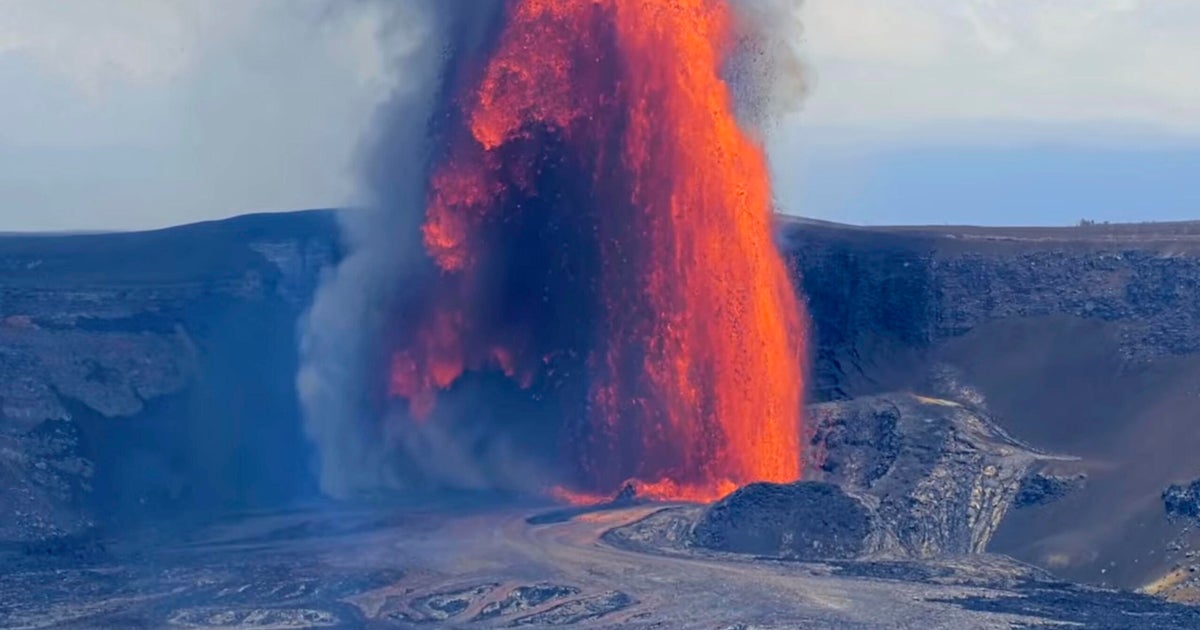One of the world’s most active volcanoes, Kilauea on Hawaii’s Big Island, began spewing lava from the north vent Wednesday, the latest event in an ongoing eruption that began almost six months ago.
Lava fountains reached heights of more than 330 feet and feeding multiple lava streams. Scientists with the U.S. Geological Survey’s Hawaiian Volcano Observatory said the fountains were likely to go higher.
“Here we go again!” the observatory wrote on its Facebook page.
United States Geological Survey via AP
The latest event was preceded by gas-pistoning, in which gas accumulates at a lava column’s top within a vent, on Tuesday.
The observatory said this process causes the lava surface to rise or piston. “Eventually, gas escapes as splatter/lava is erupted, and lave drains back into the vent,” the observatory wrote.
These were occurring up to 10 times an hour, but increased in intensity until a small, sustained dome fountain began to feed flows to the crater floor a day later.
The USGS has set up three Kīlauea summit livestream videos, which can be seen here.
It is the 25th eruptive episode since the volcano on the southeastern part of the island began erupting Dec. 23. It has been pausing and resuming since.
Most of the eruptive episodes have spewed lava for about a day or less, with pauses between them generally lasting a few days.
The USGS warned that high levels of volcanic gas can have far-reaching effects downwind. Sulfur dioxide (SO2) reacts in the atmosphere to create the visible haze known as vog (volcanic smog), which may cause respiratory and other problems, the agency said.
Additional hazards include Pele’s hair (strands of volcanic glass often produced by lava fountaining activity) and other volcanic fragments that can fall on the ground within a few hundred yards of the eruptive vents, the USGS said.

